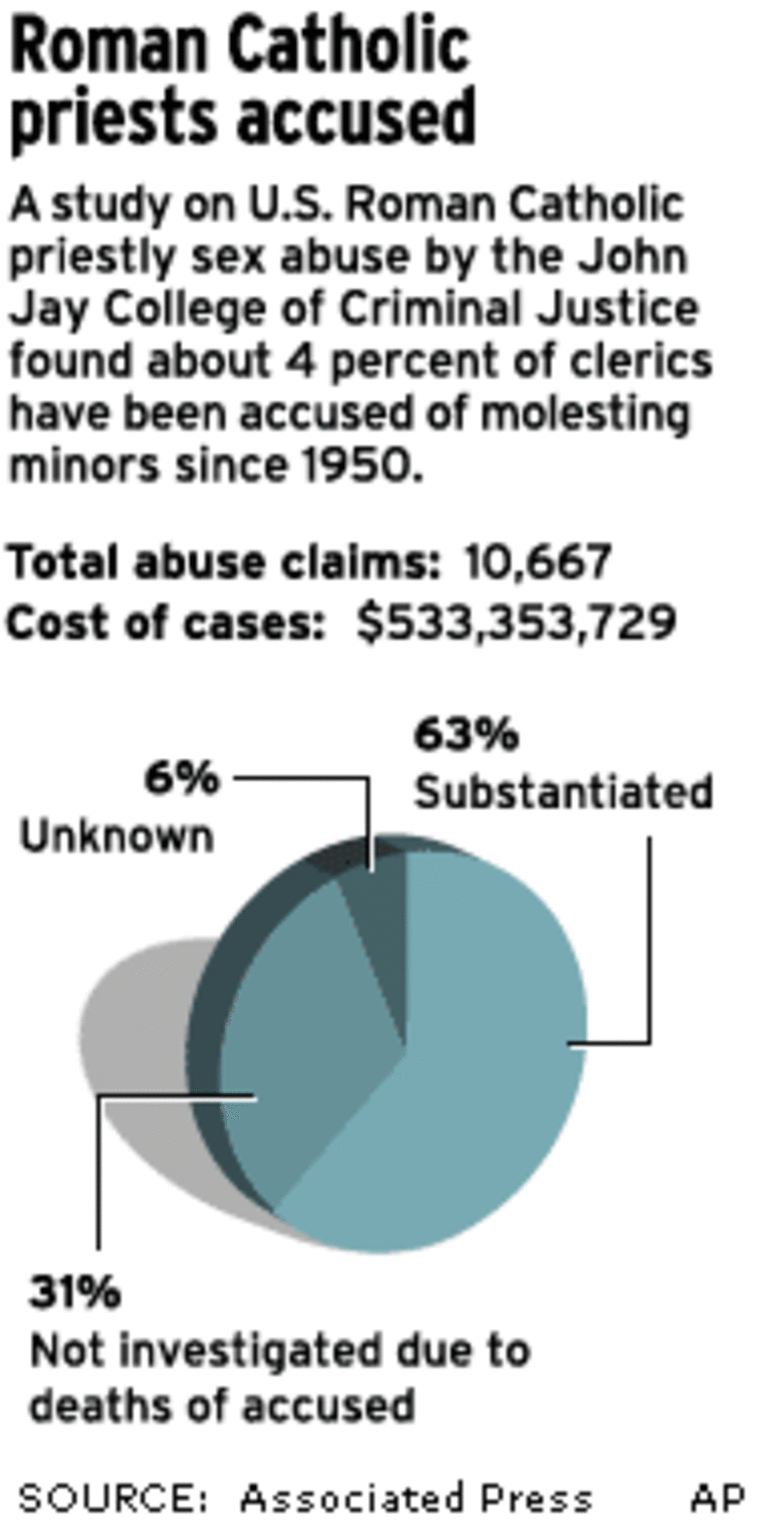Being molested by a priest left James Devereaux with nobody to confess to. What he could not find at the confessional as a boy, Devereaux hoped he would find in court as a man.
But just as Devereaux and his lawyer were preparing to sue the late Rev. Maurice Grammond, the Portland Archdiocese announced it was filing for bankruptcy.
The archdiocese took action because of the steep costs from clergy sex abuse lawsuits, halting the trial of a lawsuit against Grammond, accused of sexually abusing more than 50 boys in the 1980s.
Devereaux said he would persevere despite the Chapter 11 bankruptcy filing, an unprecedented step that could open the Roman Catholic archdiocese to new levels of court scrutiny.
“We will continue our fight to finally get the archdiocese to accept the sin of its crimes,” said Devereaux, a 52-year-old rancher who said he was raped repeatedly by Grammond beginning in 1964 in the southern Oregon logging town of Oakridge.
“I had been taught as a child that God is Almighty,” he said, “and the priest is his representative.”

No other American diocese has filed for bankruptcy, though Boston threatened to do so at the height of the abuse crisis that erupted there two years ago. The Diocese of Tucson, Ariz., has said it will decide whether to seek court protection before an abuse trial there in September.
Plaintiffs in the two lawsuits involving Grammond have sought a total of more than $160 million.
The archdiocese and its insurers already have paid more than $53 million to settle more than 130 claims dating to 1950 by people who say they were abused by priests. Most of those lawsuits have been filed since 1999.
The bankruptcy filing includes claims against the diocese from 20 pending priest abuse lawsuits, ranging in amounts from $5.1 million to $135 million. It also includes what appears to be a $22.3 million bank loan.
The filing did not include a list of the archdiocese’s assets, which will be filed later.
Bud Bunce, spokesman for the 356,000-member archdiocese, said church operations will continue as usual.
“All the parishes will continue with their regular services,” Bunce said. “For the most part we anticipate the normal, everyday types of activities we do will continue.”
Chapter 11 bankruptcy frees an organization from the threat of creditors’ lawsuits while it reorganizes. However, it also could open church records to public scrutiny, and could require church leaders to cede some financial control to the courts.
Archbishop John G. Vlazny said the archdiocese tried to settle with the plaintiffs, but could not afford their offer.
“The pot of gold is pretty much empty right now,” Vlazny said.
Plaintiffs’ attorney David Slader countered that the church was simply trying to avoid the details of the lawsuits coming out in court. “The bishop hasn’t begun to touch his pot. He is lying,” Slader said.
“The archdiocese is one of the wealthiest corporations in Oregon,” Slader said. He said the archdiocese owns over $500 million in tax-assessed properties, and has many investments.
Bunce declined to disclose the value of church assets.
Grammond served as a priest throughout the state from 1950 to 1985, when he took sick leave. Allegations of sexual abuse against Grammond were first reported in 1991, but the charges didn’t become public until 1999 when a former altar boy sued him and the archdiocese. Grammond was suspended when he refused to fully cooperate in the church investigation.
In a deposition taken before his death, Grammond said, “I’d say these children abused me. They’d dive in my lap to get sexual excitement.”
The Archdiocese of Boston was flooded with hundreds of civil lawsuits and considered bankruptcy, but opted to sell church real estate worth millions to settle claims.
In the 1990s, the Archdiocese of Santa Fe, N.M., was brought to the brink of bankruptcy, and had to borrow from parish savings accounts to pay out millions of dollars because of abuse claims.
“Dozens of dioceses facing lawsuits for sexual abuse by priests threatened to file for bankruptcy, but none has gone this far. The threats to file have been calculated schemes by both defense attorneys and public relations officers,” said Barbara Blaine, president of the Chicago-based Survivors Network of those Abused by Priests.
Nationwide, abuse cases are known to have cost the church more than $650 million since 1950. Still, relatively few molestation lawsuits have gone to trial in the United States; many settle beforehand.
Bill Crane, who heads the Oregon chapter of the Survivors Network, said abuse is “like taking a nail out of a wall. The nail’s gone, but the hole is still there. It’s never going to go away.”
Crane, 38, said he moved to Oregon from Mendham, N.J., where he and his twin brother were molested as boys by the Rev. James Hanley.
“The Vatican needs to sell a few paintings if they think they can’t afford to pay for this,” he said.